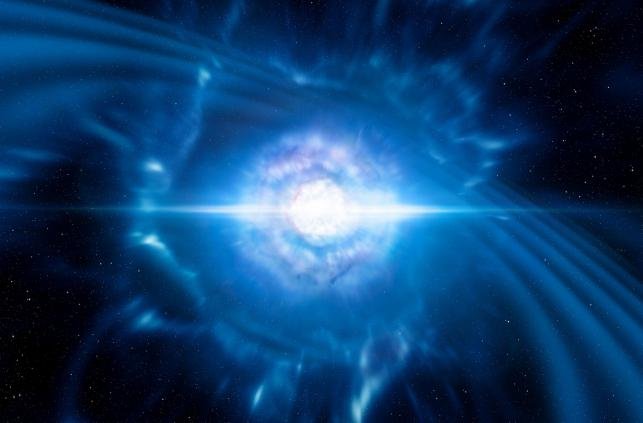Neutron star smashup dazzles scientists

Out of the blue, researchers have seen the destructive crash of two ultra-thick neutron stars in a world far away, and presumed that such effects fashioned at any rate a large portion of the gold in the Universe.
Shockwaves and light flashes from the impact voyaged nearly 130 million light-years to be caught by Earthly locators on August 17, energized groups uncovered at question and answer sessions held the world over on Monday as twelve related science papers were distributed in top scholastic diaries.
"We saw history unfurling before our eyes: two neutron stars moving closer, nearer... turning speedier and quicker around each other, at that point impacting and dissipating garbage everywhere," co-pioneer Benoit Mours of France's CNRS inquire about foundation told AFP.
The notable perception explained various material science questions and sent swells of fervor through established researchers.
Most stunning for some, the information at long last uncovered where a great part of the gold, platinum, uranium, mercury and other overwhelming components in the Universe originated from.
Telescopes saw proof of recently produced material in the aftermath, the groups said-a source since a long time ago suspected, now affirmed.
"It makes it very obvious that a huge part, perhaps half, perhaps more, of the overwhelming components in the Universe are really created by this sort of crash," said physicist Patrick Sutton, an individual from the US-based Laser Interferometer Gravitational-Wave Observatory (LIGO) which added to the find.
Neutron stars are the dense, worn out centers that remain when enormous stars come up short on fuel, explode, and pass on.
Regularly around 20 kilometers (12 miles) in breadth, yet with more mass than the Sun, they are exceptionally radioactive and ultra-thick a modest bunch of material from one weighs as much as Mount Everest.
'Excessively excellent'
It had been conjectured that mergers of two such intriguing bodies would make swells in the texture of room time known as gravitational waves, and in addition splendid flashes of high-vitality radiation called gamma beam blasts.
On August 17, locators saw the two wonders, 1.7 seconds separated, originating from a similar spot in the star grouping of Hydra.
"It was clear to us inside minutes that we had a double neutron star location," said David Shoemaker, another individual from LIGO, which has identifiers in Livingston, Louisiana and Hanford, Washington.
"The signs were much excessively excellent, making it impossible to be anything other than that," he told AFP.
The perception was the product of years of work by a great many researchers at more than 70 ground-and space-construct observatories with respect to all mainlands.
Alongside LIGO, they incorporate groups from Europe's Virgo gravitational wave identifier in Italy, and various ground-and space-based telescopes including NASA's Hubble.
"This occasion denotes a defining moment in observational stargazing and will prompt a fortune trove of logical outcomes," said Bangalore Sathyaprakash from Cardiff University's School of Physics and Astronomy, reviewing "the most energizing of my logical life."
"It is hugely energizing to encounter an uncommon occasion that changes our comprehension of the workings of the Universe," included France Cordova, executive of the National Science Foundation which reserves LIGO.
The recognition is another plume in the top for German physicist Albert Einstein, who initially anticipated gravitational waves over 100 years back.
Something 'key'
Three LIGO pioneers, Barry Barish, Kip Thorne and Rainer Weiss, were granted the Nobel Physics Prize this month for the perception of gravitational waves, without which the most recent revelation would not have been conceivable.
The swells have been watched four times previously now-the first run through by LIGO in September 2015. Each of the four were from mergers of dark gaps, which are significantly more brutal than neutron star crashes, yet discharge no light.
The fifth and most recent location was joined by a gamma beam burst which researchers said originated from closer in the Universe and was less brilliant than anticipated.
"What this occasion is letting us know is that there might be numerous a greater amount of these short gamma beam blasts going off close-by in the Universe than we expected," Sutton said-an energizing prospect for researchers wanting to reveal advance insider facts of the Universe.
In addition to other things, it is trusted that information from neutron star impacts will permit the authoritative figuring of the rate at which the universe is extending, which thus will disclose to us how old it is and how much issue it contains.
"With these perceptions we are not simply realizing what happens when neutron stars impact, we're additionally getting the hang of something central about the idea of the Universe," said Julie McEnery of the Fermi gamma beam space telescope venture.

No comments